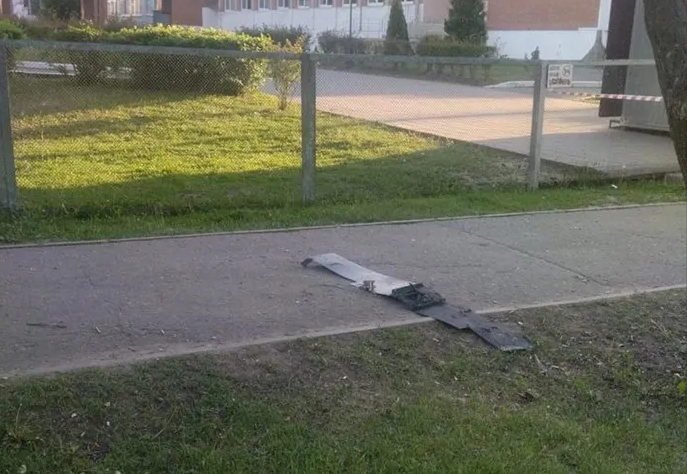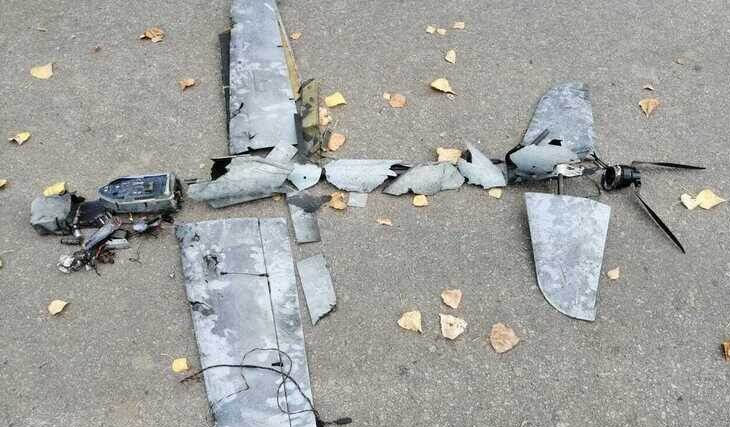Russia responded to a massive Ukrainian drone attack on Russian regions with spectacular strikes, including on Kyiv’s Antonov Serial Production Plant, threatening to develop cheap Russian drones into strategic weapons amid a critical depletion of Ukrainian air defences.
Over the past three days, Ukrainian drones attacked central Russian regions, including Moscow, Kursk, Belgorod and Tula regions. As a result, Domodedovo, Zhukovsky and other airports were temporarily closed, paralysing air traffic.

According to the Russian Defence Ministry, air defence forces destroyed 337 Ukrainian drones overnight on 25 May. The attacks, however, did not bring strategic results other than demonstrating the Ukrainian armed forces’ ability to disrupt infrastructure operations.

Meanwhile, Moscow’s response was swift and asymmetric. The night strikes by the Russian Armed Forces in recent days, including the targeting of the Antonov plant in Kyiv, were not just a retaliation, but a signal of a shift to “industrial suppression” of Ukraine’s defence potential.
Strike at Antonov plant
On 24 May, Russian forces launched a combined strike on the Antonov plant where the Liutyi attack drones used against Russia were manufactured. The Russian attack reportedly involved 20 Geran drones and Iskander-M ballistic missiles. Russia called the attack on the factory a demonstrative response to the mass drone attacks by the AFU on Russian regions.
Ukrainian media shared a video of the strike. Several workshops assembling drone modules were reportedly destroyed, as well as servers coordinating Kyiv’s air defence systems. The Patriot SAM system tries to deflect the missiles and finally the starts firing from its full power, shooting the anti-aircraft missiles one after the other.
The attack was carried out in several stages. First, trap drones were deployed, triggering the activation of Ukrainian air defence systems. Then drones with warheads attacked the identified positions. The last stage was the use of Iskanders in conjunction with radar jammers, which made it possible to break through the defences and destroy the plant’s key facilities.
According to Ukrainian President Volodymyr Zelensky, 250 drones and 14 ballistic missiles hit the country the same night, confirming the scale of the Russian operation.
1,000 drones overnight: how Ukraine’s air defence loses effectiveness
The Economist predicts that Russia is nearing the capacity to launch 1,000 drones per night by ramping up production to 500 per day. This creates an “unmanned siege system” where neither Patriot nor NASAMS can provide full protection due to ammunition limitations.
Russian AI drones use Ukrainian mobile networks and the internet, avoiding GPS suppression, military experts say. For example, the new models fly at a low altitude, and in front of the target they rise sharply to 2,500 metres, moving out of range of small-calibre artillery.
Patriot systems, despite their claimed capabilities, are vulnerable. During the night of 25 May, the SAM units fired 20-40 PAC-3 MSE missiles, the latest modification with a range of up to 40 kilometres. However, their effectiveness is compromised by limited integration, as Patriot requires coordination with US satellite intelligence, which calls into question the autonomy of Ukrainian operators.
Ukraine is also facing resource depletion. The cost of a single Patriot battery reaches $1bn, with PAC-3 missiles being produced at a rate of 650 per year, which is insufficient against Russia’s estimated 500 ballistic missiles in stockpile. Moreover, US experts’ participation in the system’s operations, if confirmed, jeopardises the US getting directly involved in the conflict.
Strategic implications
The strike on Krasyliv, Khmelnitskyi region, where seven Kh-101 missiles hit a facility near the Starokostiantyniv Air Base where Ukrainian F-16s are based, demonstrates Russia’s ability to target key military targets. Ukraine, counting on a pause in the strikes, had dispersed its weapons stockpile to warehouses, but Russian intelligence uncovered their location.
Russia dominates drone production, turning them into strategic weapons at a price ten times lower than cruise missiles. Meanwhile, the US and EU, Ukraine’s main allies, are demonstrating an unpreparedness for a long war of attrition, especially as their own economic challenges are mounting.
The Russian army’s ability to scale strikes to 1,000 drones per night threatens the survivability of Ukrainian air defences, especially amid reports of depleting stocks of missiles for SAMP-T air defence systems and shells for French-made Crotale anti-aircraft systems.
If Russia’s stated production rate of 500 drones per day is reached and strike waves of 1,000 drones become regular, the Geran drones will become an extremely cheap strategic weapon for destroying Ukrainian military infrastructure.
